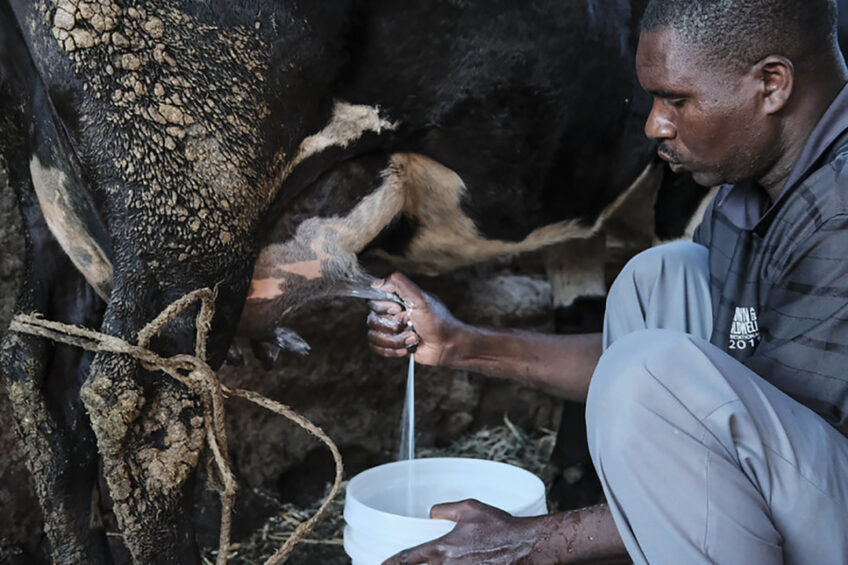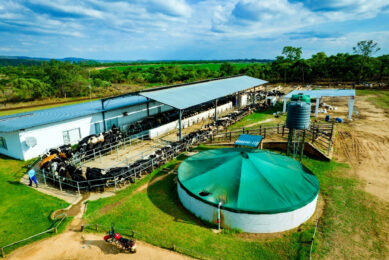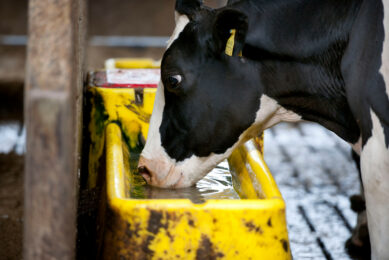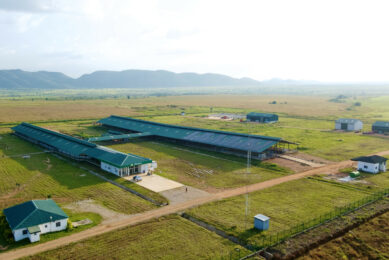Heat setting off alarm bells in East Africa

East Africa has the largest population of livestock in sub-Saharan Africa. Climate change, with its hotter and more humid weather in the region, is putting increasing pressure on the local dairy sector, making exotic dairy production challenging in much of the region.
East Africa has the highest population growth on the continent and is home to approximately 145 million cattle. However, research published in Nature Food warns that the frequency of dangerous heat stress conditions and the average number of consecutive days with heat stress events will significantly increase. This will detrimentally impact the thermal comfort of dairy cows across the region, thereby negatively impacting milk productivity. It is also worth noting that beef cattle production is reported to be less sensitive to heat stress than dairy cattle production.

The maximum temperature in East Africa increased by 1.16°C across the period 1953–2013, and by the middle of the 21st century, temperatures are predicted to increase by 2–3°C in the middle and northern parts of East Africa. Such climate changes will alter the frequency of heatwave events. Furthermore, climate data going back to 1981 shows that livestock have already been progressively subjected to heat stress conditions, and projections by the team of researchers show that the situation is set to worsen significantly.
Heat stress in dairy cows
The frequency of Severe/Danger heat stress events (events that result in significant decreases in productive and reproductive performance) for dairy cows between 1981 and 2010 ranged from less than 2.5% in some areas in the eastern and northern parts of East Africa to more than 50% in the central parts of South Sudan, eastern parts of Kenya and southern parts of Somalia and Eritrea. Furthermore, the frequency of Severe/Danger heat stress for livestock increased in 26% of the study area for dairy cows (Figure 1).
Figure 1 – Trends in the percentage of days with Severe/Danger heat stress during the historical period 1981-2010. Stippling indicates that trend values are significant at the 95% confidence level.

Click here to enlarge this figure
Heat stress projections
In terms of future heat stress projections for dairy cows, the average frequency of days with Severe/Danger heat stress is projected to increase by around 12% by the period 2071–2100 compared to the historical period and to occur on more than 50% of the days of the year.
The researchers’ projections show that under future climate conditions, both the number of days with heat stress and the length of heat stress periods will increase in East Africa. For dairy, the average length of heat stress periods categorised as Severe/Danger went from around 3 days in the historical period to 20 days in the 2071–2100 period.
It is interesting to note that, currently, ~11–15% (~2,924,000–~3,987,000 tonnes of milk) of total milk production occurs in areas where the frequency of Moderate and Severe/Danger heat stress is expected to increase significantly by 2071–2100. In the period 2021–2050, 8–15% of milk production is likely to be affected. These elevated levels of heat stress could make much of East Africa unsuitable for dairy production unless direct and immediate action is taken.

Urgent planning and investment
Co-author of the study, Klaus Butterbach-Bahl at the International Livestock Research Institute and the Karlsruhe Institute of Technology, which analysed the climate data, said: “This paper is an alarm bell for policymakers, and anyone involved in livestock in the tropical region. This could worsen the food and nutrition security situation.”
An Notenbaert at the Alliance of Bioversity International and International Center for Tropical Agriculture, and co-author of the study, added that the team knew climate change would bring problems for animals; however, they were surprised by the magnitude of change. “Climate change mitigation and adaptation measures absolutely need to be factored into decisions and strategies for livestock production,” Notenbaert said.

Increasing resilience in the dairy sector
The research team believes that well-targeted and evidence-based climate adaptation – including identifying and making available productive animal breeds that are adapted to heat – will enable livestock production to continue and expand across East Africa. Countries like Rwanda and Kenya have moved towards using exotic breeds to meet the growing demand for milk in their countries because these breeds are more productive. “Holstein Friesians, a popular imported breed, are not indigenous to Africa. Although they produce more milk than local breeds, they do not cope well with heat,” noted Notenbaert.
Despite progress in genetic selection practices through phenotypic traits, and more recently by genomic approaches, there are still important steps to be taken, including crosses of indigenous and exotic breeds that retain the desired characteristics of each: adaptations to the local climate, feed and disease conditions from the indigenous breeds and increased productivity from the exotic breeds.
Late-gestation heifers and heat stress
Increasing global environmental temperatures have detrimental effects on the dairy industry. While the effects of heat stress on multiparous lactating and non-lactating dairy cows have been studied extensively, the effects on gestating heifers have received less attention. Find out more…
“To make livestock production more environmentally efficient, we need breeds that can cope with rising temperatures and still produce more meat and milk,” added Notenbaert.
In addition to breeding, countries need to look to other mitigation strategies to increase resilience. This could be in the form of shelters or other means of shading to shield animals and ensure sufficient water access.
The researchers cautioned that the study only examined the direct consequences of climate change on animals, but that other climate change impacts and climatic parameters such as temperature, humidity, solar radiation, and rainfall patterns have important direct or indirect influences on diseases, parasitism and feed resource availability and need to be taken into consideration.
Join 13,000+ subscribers
Subscribe to our newsletter to stay updated about all the need-to-know content in the dairy sector, two times a week.










